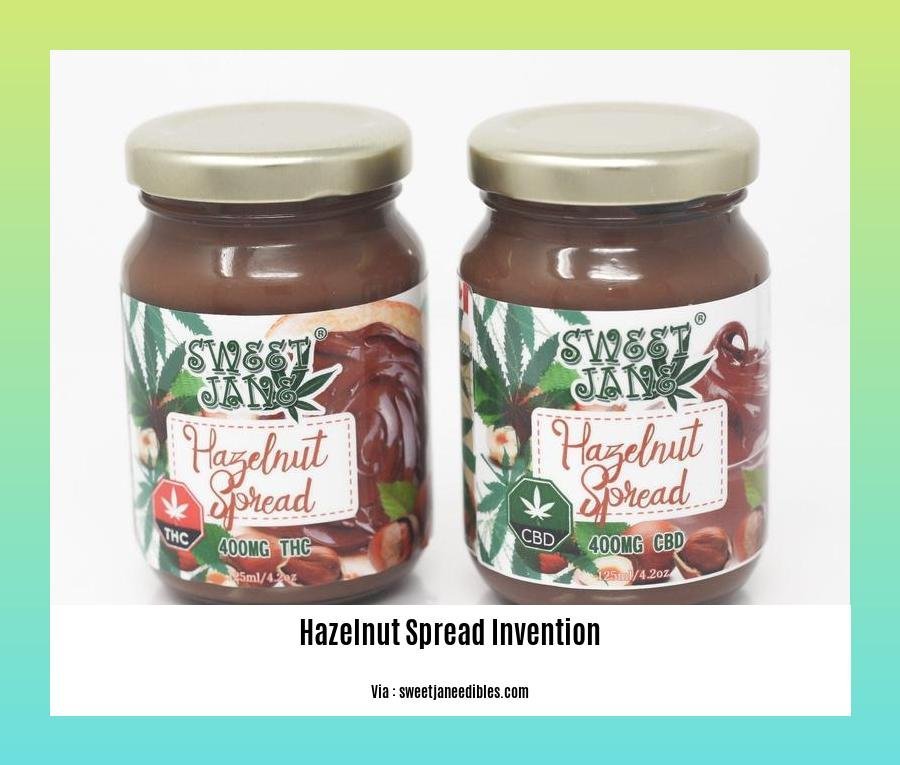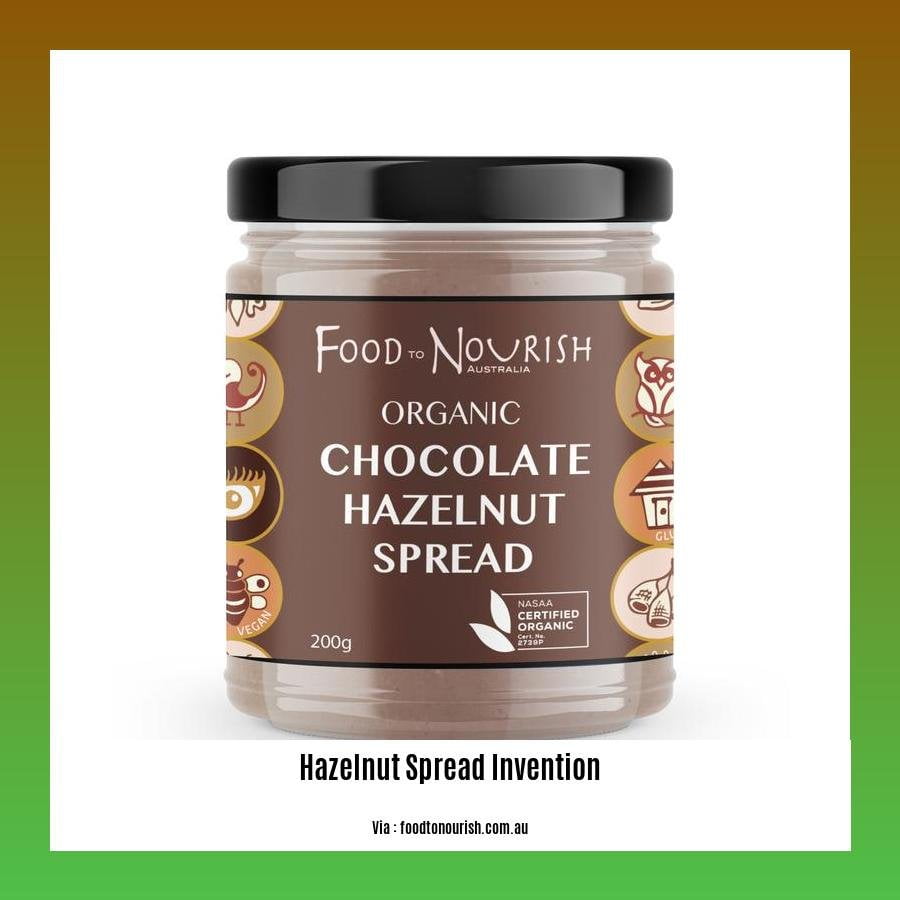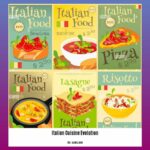Unveiling the extraordinary tale behind the invention of hazelnut spread, a culinary masterpiece that has captivated taste buds for decades, [The Hazelnut Spread Invention: A Culinary Revolution] delves into the fascinating world of its origins and evolution. Join us as we uncover the remarkable journey of this beloved spread, exploring the culinary innovations, cultural influences, and personalities that have shaped its enduring legacy on our palates.
Key Takeaways:
- Nutella emerged as a chocolate-hazelnut spread.
- Its roots trace back to Italy in the 19th century, initially named “Gianduia.”
- Wartime cocoa shortage prompted the addition of more hazelnuts, resulting in the present-day Nutella recipe.
- Introduced in 1964, Nutella gained immense popularity globally for breakfast and desserts.
The Hazelnut Spread Invention: A Culinary Revolution

A Journey into the Origins of the Beloved Nutella
Just like any culinary invention, the hazelnut spread has a fascinating history rooted in an inventive mind, resourcefulness, and a love for flavors. Let’s explore the story behind this iconic spread:
The Birth of Gianduia: The Precursor to Nutella
The hazelnut spread we know today traces its origin to the early 1800s in Italy. A confectioner named Pietro Ferrero, in the quaint town of Alba, crafted a sweet treat named Gianduia. This delectable spread was a blend of hazelnuts, sugar, and cocoa powder.
World War II and the Hazelnut Boom
During World War II, cocoa became scarce, prompting Ferrero to experiment with his recipe. He generously added more hazelnuts to compensate for the reduced cocoa content, inadvertently creating the foundation of the beloved Nutella.
The Birth of Nutella: A Star is Born
In 1964, Michele Ferrero, Pietro’s son, decided to capitalize on the popularity of his father’s creation. He refined the recipe, christened it “Nutella,” and the rest, as they say, is history. Nutella quickly captivated taste buds worldwide, becoming a quintessential breakfast and dessert staple.
The Hazelnut Spread Invention: A Culinary Legacy
The invention of the hazelnut spread was a culinary triumph that revolutionized breakfast and dessert options. Its rich, nutty flavor, velvety texture, and versatile nature have made it an enduring favorite. Whether slathered on toast, paired with fruit, or simply savored by the spoonful, Nutella continues to delight generations.
Uncover the origins and history of chocolate hazelnut spread in our comprehensive guide, tracing its journey from humble beginnings to global popularity.
For chocolate lovers, the tale of Nutella’s history is a captivating journey of innovation and culinary artistry.
Explore the origins of chocolate spread, from its ancient roots to the modern-day marvel that tantalizes our taste buds today.
The Birth of Nutella

Hey there, food adventurers! Let’s embark on a culinary journey through time to uncover the fascinating tale of how Nutella came to grace our breakfast tables and dessert creations.
Key Takeaways:
- Nutella originated in Alba, Italy, in 1946.
- It was originally called “Pasta Gianduja,” a solid block of hazelnut and chocolate paste.
- Michele Ferrero transformed it into a creamy spread in 1951, naming it “Supercrema Gianduja.”
- The spread was relaunched in 1963 as Nutella.
- Nutella‘s unique combination of hazelnuts and chocolate has made it a global favorite.
The Culinary Alchemist: Pietro Ferrero
Pietro Ferrero, a visionary baker from Alba, Italy, was the mastermind behind Nutella. In the aftermath of World War II, when cocoa was scarce, Pietro experimented with hazelnuts, abundant in his region. He blended these with chocolate to create a satisfying substitute for cocoa, unknowingly laying the foundation for a culinary sensation.
Evolution to Creaminess: Michele Ferrero’s Innovation
Pietro’s son, Michele Ferrero, took the hazelnut-chocolate concoction to new heights in 1951. He transformed the solid block into a velvety, spreadable cream, which he aptly named “Supercrema Gianduja.”
The Birth of a Global Icon: The Nutella Era
In 1963, Michele Ferrero relaunched the spread under the iconic name Nutella. The new name, a play on the English word “nut” and the Italian suffix “-ella” (meaning “sweet”), perfectly captured the essence of this hazelnut-chocolate delight.
Nutella’s Enduring Legacy
Nutella quickly gained popularity, conquering hearts and palates worldwide. Its irresistible taste, versatility, and convenience made it a breakfast staple, a dessert indulgence, and a culinary companion for countless creations.
Citation:
Nutella Conquers the World
The irresistible hazelnut spread we know as Nutella has a rich history dating back to the aftermath of World War II. It began as a humble confection in the small Italian town of Alba, where pastry chef Pietro Ferrero faced dwindling cocoa supplies during wartime rationing.
Ferrero’s ingenuity led him to combine hazelnuts, an abundant local crop, with whatever cocoa he could find, creating a spread he named “Giandujot.”
In 1951, Pietro’s son, Michele, refined the recipe, making it creamier and introducing the now-iconic name “Nutella” in 1963. Its unique blend of hazelnuts and chocolate captivated taste buds worldwide, and Nutella swiftly became a breakfast and dessert staple.
Key Takeaways:
- The inspiration behind Nutella was the cocoa shortage during World War II.
- Alba, Italy, is the birthplace of this beloved spread.
- Pietro Ferrero created it using hazelnuts and cocoa.
- Michele Ferrero transformed it into the creamy delight we know today.
Citation:
Modern Variations and Controversies
From its humble beginnings in war-torn Italy to its global dominance, the hazelnut spread has undergone a captivating evolution. Today, it faces modern variations and controversies that shape its culinary landscape.
Modern Variations:
The classic hazelnut spread has inspired countless variations, each with its own unique twist. Some notable versions include:
- Dark Chocolate: Infused with rich dark chocolate for a more intense flavor.
- White Chocolate: A sweeter and creamier variation, perfect for those with a sweet tooth.
- Vegan: Made with plant-based ingredients like almond or cashew milk, catering to a growing vegan audience.
- Reduced Sugar: A healthier option that balances sweetness without compromising on flavor.
Controversies:
Despite its popularity, the hazelnut spread has faced some controversies:
- Health Concerns: Some critics question its high sugar and fat content, raising concerns about its long-term health effects.
- Sustainability: The demand for hazelnuts has raised environmental concerns, including deforestation and soil degradation.
- Ethical Sourcing: Issues have been raised regarding the fair treatment and wages of hazelnut farmers in some producing countries.
Key Takeaways:
- The hazelnut spread has evolved from its humble origins to become a global culinary staple.
- Modern variations offer diverse flavor profiles and dietary preferences.
- Controversies surrounding the spread include health concerns, sustainability, and ethical sourcing.
Citation:
Nutella: How the world went nuts for a hazelnut spread
FAQ
Q1: What was the original name of Nutella?
A1: Giandujot
Q2: Who invented Nutella?
A2: Pietro Ferrero
Q3: When was Nutella created?
A3: 1946
Q4: What was the inspiration behind the creation of Gianduja, the precursor to Nutella?
A4: Napoleon’s blockade, which cut off cocoa supplies to Turin, Italy.
Q5: How did World War II influence the development of Nutella?
A5: Food rationing during the war led to the addition of more hazelnuts to Gianduia, creating the spread that we know today as Nutella.
- Georgia Platform: A Southern Strategy, 1850s - March 31, 2025
- How many weeks is 40 days: Quick Conversion Guide for Accurate Results - March 31, 2025
- How many feet is 300 meters? 984 Feet: Understand Length Conversions Easily - March 31, 2025
















